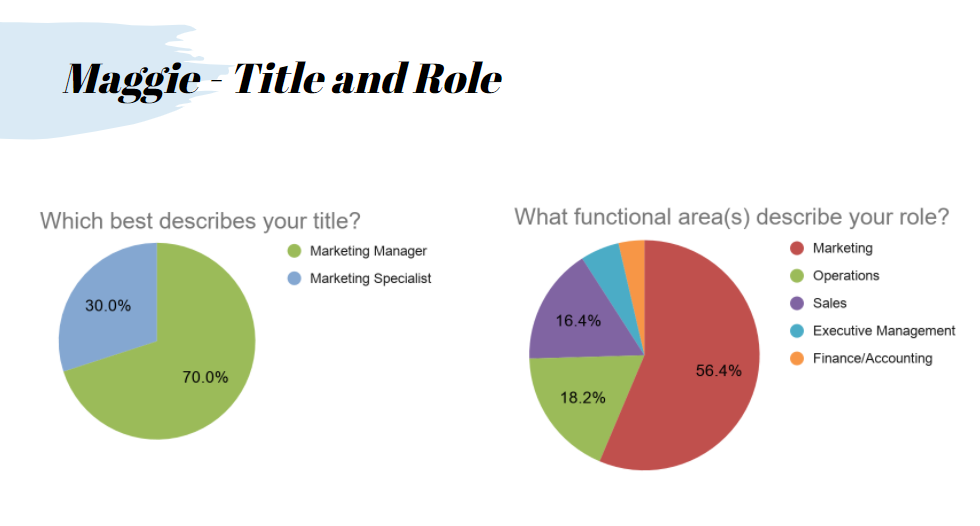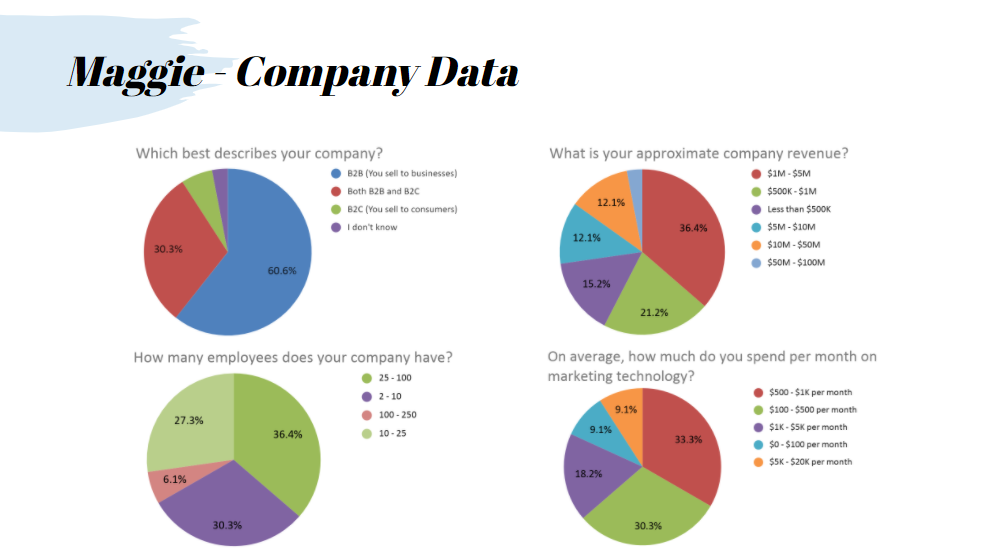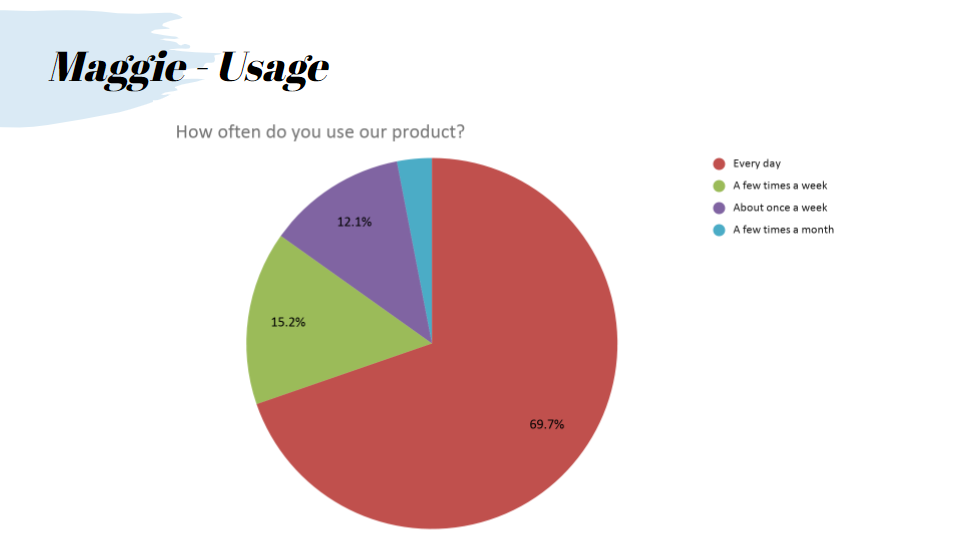How to Create Your Small Business Marketing Plan
Small business owners take on many responsibilities and have to handle numerous tasks with only a few team members to help if any. This makes it challenging to put sufficient effort into important aspects of your small business, such as marketing. Implementing a solid marketing strategy will ensure you can consistently sell to existing customers […] The post How to Create Your Small Business Marketing Plan appeared first on BenchmarkONE.

Small business owners take on many responsibilities and have to handle numerous tasks with only a few team members to help if any. This makes it challenging to put sufficient effort into important aspects of your small business, such as marketing.
Implementing a solid marketing strategy will ensure you can consistently sell to existing customers and convert new prospects without losing track of other vital aspects of your business.
Marketing is especially important today. There are fewer brick-and-mortar stores and more trends toward eCommerce and online shopping. Therefore, it is essential to establish a strong online presence and make your business visible and accessible to the 5.3 billion people on the internet.
In this article, we’ll show you how to create an effective marketing plan — but first, let’s discuss the basics.
What Is a Marketing Plan?
A marketing plan is a document that outlines your paid advertising, social media, email, SEO, or content marketing strategy. Think of it as a strategic roadmap showing your starting point and the path to your destination.
In this case, the marketing plan describes the objectives of your strategy, such as increasing traffic to your website, building product awareness, or growing lead generation. Besides that, it details the action plan — the things you need to do to achieve those goals — and stipulates a timeline for each.
While not all marketing plans are created equal, they share a similar structure that includes:
- A list of goals
- Research including SWOT analysis, competitor analysis, buyer purchase cycle, and buyer personas
- Your detailed strategy
- A definition of your key performance indicators (KPIs) and result tracking methods.
- A tactical process
What Are the Benefits of a Marketing Plan?
It Informs Your Content Marketing
An effective marketing plan gives your content marketers a North Star to follow. It clearly outlines the goals and expectations, as well as how to attain them.
For example, if your goal is to increase funnel conversion, your marketing plan will highlight the things you need to do at every stage of the buyer’s journey. Perhaps you need to publish more blog posts that address questions at the consideration stage of the journey. Or, maybe you need to create more case studies to help prospects on the fence make a decision to convert. Or, if you aren’t seeing enough leads enter your funnel, then you know it’s time to up your social media and guest content.
Even better, the plan offers an outlined process for creating content and distributing it so that it sees as much value as possible. This ensures that your strategy has legs and gets put into motion.
Serves as a Guide for Your Marketing and Sales Efforts
Beyond guiding your content marketing efforts, a marketing plan streamlines your sales process. It gives your teams an instruction manual or blueprint that lets everyone know exactly what steps your sales team needs to take to see results.
Let’s say your website brings in 10,000 visitors a month, 3% of which converts. That means every month, you get 300 customers. If you want to double the number of customers every month, then it means you have to double your web traffic or improve the conversion rate. With a marketing plan, you have your conversion goals tracked so you can easily check-in and see if they’re being met.
It Tracks Your Goals and Strategy
Having measurable goals is the only way to be successful in actually meeting them. Since your marketing plan is guiding your sales and marketing efforts, it can easily connect the dots to marketing and sales metrics you’ll use to measure the success of your efforts. Not to mention, it provides a framework with which to track your progress.
For example, if your goal is to double web traffic within one year. You can measure traffic growth in the first quarter and see if the numbers match up with what you laid out in your plan. If you’re falling off track, you could re-evaluate your plan and tweak some aspects to get everything on track.
Constant evaluation and refining of the strategy enables you to ultimately achieve your goals.
It Keeps Your Teams Aligned
Despite their similar goals, your sales and marketing team has its own agendas and processes to follow. Your marketing plan can help ensure they stay aligned, so things don’t fall through the cracks.
More than anything, though, it gives teams a clear, shared path, allowing them to see both the forest and the trees when it comes to the overarching marketing objectives.
For example, if you’re looking to build awareness for a new product, a marketing plan ensures the teams are aware of the target audience and the means to reach out to those customers.
Doing so ensures everyone can focus resources and efforts towards a common goal. Ultimately, that streamlines marketing practices and enables your teams to operate more efficiently.
Basics of a Marketing Plan
A marketing plan is a document that clearly details your business’s roadmap to organize and implement its marketing strategy over a specified period. Marketing plans enable businesses to consider important factors before launching a campaign. Such factors include campaign goals, marketing tactics, buyer personas, and deliverables.
For any effective marketing plan, the following are non-negotiables.
- Conduct Market research
- Products and offerings analysis
- Target audience definition
- Marketing goals (tied to your business goals)
- Planned budget and timeline for the execution of your marketing strategy
- Your KPIs and how to measure them
How to Create Your Small Business Marketing Plan
A great marketing plan is a major competitive advantage and is worth the time that it takes to put together. Here’s an in-depth guide for how to put one together.
1. Start With Market Research
You might have a general idea of where you want to go with your marketing, but you have to put that idea into the appropriate context of a customer persona – more on this later. This means performing market research to understand the scope of both your industry and your audience, with an eye out for nuances that could directly affect your plans.
To truly understand your market and what makes your audience tick, you need to ask yourself a series of questions that uncover the unknowns and the truths.
- What platforms does your audience utilize?
- What does a standard buyer’s journey look like in your field?
- What are your competitors doing with their emails, their social media, and their blogs?
- Finding the answers to questions like these will help you shape your marketing plan from the outside so that you target your efforts and don’t waste time on fruitless endeavors.
Make sure you also pay special attention to the key stages of market research. The last thing you want to do is breeze through your research and miss anything, or not give a certain stage the attention necessary. Doing so could make you miss out on something crucial, and if you miss the mark on knowing your audience, you won’t know the best way to speak to them. Here are the five crucial market research stages you need to know:
- Market Analysis
- Competitor Analysis
- Trends Analysis
- Customer Analysis
- SWOT Analysis
If you need to, or if you have the resources, outsource an agency that can help you dig into these areas. The more in-depth you’re able to get, the more you’re able to uncover that can serve you later.
2. Analyze Your Product and Offerings
Along with your sales team, you need to be the leading expert on the product or service that you’re selling. While you obviously know a lot already, try to come at it from a new perspective. Again, here are some questions you should be asking at this step:
- What kinds of product-related questions would somebody who knows nothing about your brand have?
- What are the stand-out features that separate your offerings from the competition?
- What about your competitors’ products gives them an edge?
- What are the most common issues your customers have with your product?
Analyzing your product or service from all possible angles will help you hone in on knowledge gaps and educational opportunities, both of which will guide your plan.
A great way to gain insight into this kind of information is to analyze your CRM data. Your CRM can be used for more than just sales. In fact, it can influence numerous areas within your business, including product lifecycle and development. Look into data on upsells to see what about your product is so impressive that it’s leading to more purchases from your clients. Or, look at why certain customers may be terminating the use of your product to determine what features just aren’t cutting it. Your CRM can also give you information on the original selling point of your product, so you know what not to change in the future.
3. Define Your Target Audience
You’d be amazed at how many small businesses haven’t officially outlined their ideal buyer or target audience. They may claim to know exactly who that person is, but the truth is, over time, the target audience changes and evolves. Just like businesses, things adjust as the market adjusts, and who you initially thought you’d be selling to may look a little different a few years in.
That’s why it’s imperative that you periodically examine who your target audience is but nail down exact characteristics and document them. This is all a part of having an effective marketing strategy, because after all, if you don’t know who you’re marketing to, then you won’t be able to sell your product.
Know your target audience inside and out before embarking on your marketing plan. This includes diving into their wants, needs, pain points, and demographics. Segment your buyer personas in the same way you’ll segment your marketing efforts, creating robust profiles of your target customers at various stages of the funnel. From there, you can better define your goals, as well as how you hope to achieve them.
Again, a CRM can help you gain insights into who your ideal customers are by telling you common characteristics, like industry, company size, revenue, etc. You can also use an NPS (Net Promoter Score) to get even deeper into information around your most loyal customers.
Here’s an example of a buyer persona and the kinds of information you can access on that persona using an NPS:
Maggie the Marketer

I want to:
- Capture leads from free and paid marketing channels, like SEO, PPC, and social media.
- Communicate with Prospects and Customers consistently through smart campaigns.
- Track lead sources.
- Integrate with marketing campaigns.
- Tie marketing activity to ROI.
- View website activity and take action.



You can ask your customers that fit this persona even more specific questions, like:
- What features of your product do they use the most?
- What parts of your product do they use the least?
- What do they dislike the most about your software?
- What do they wish your software provided them?
The more specific your questions, the more insights you’ll gain into what about your product pulls your target audience in and what you can do to increase their attention over time.
4. List Your Goals
Speaking of specifics, get as specific as you can with what you want to achieve with your marketing plan. “More revenue” is an obvious objective, but it’s far more helpful to break it down into smaller, tangible goals.
Making your goals real ideas instead of just something you know is necessary for your bottom line makes it easier for your team to figure out how to achieve them. Also, it helps identify the various ways you’ll measure the success of your efforts, ensuring you’re meeting or getting close to meeting those goals.
So instead of listing “more revenue” under your goal section, try these specific goals on for size:
- Grow our email marketing list by two percent by the end of Q3.
- Produce three pieces of blog content each week.
- Get one piece of content published on a marketing site our audience reads a month.
- Generate 100 leads from social media each month.
- Generate 200 inbound marketing leads each month.
- Increase demo requests by two percent each quarter.
Having too many goals isn’t a bad thing, so long as you have ideas for pushing them forward. Create a mind map of sorts, starting with your big goals (more revenue, more customers, etc.) and forming offshoots with the smaller goals that will help you get there.
5. Think Tactics and Strategy
Now you know your goals, so it’s time to talk strategy. For most marketing plans, your tactics will be divided into five core initiatives:
- Content marketing
- Email marketing
- Paid advertising
- SEO
- Social media
Figure out how your goals fit into each of these tactics, as well as how they come together to form your bigger marketing strategy. For instance, if you know one of your goals is more lead generation, make sure you’re creating and publishing the right content to generate leads. Map out specifically what efforts you’ll be using and which goal they help achieve. Including this in your marketing plan will help you easily identify how you plan to track whether those efforts are successful.
Notice how well these things work on their own and together, and keep in mind there will likely be a lot of overlap. For example, any content you create could also be used as fuel for email marketing and drip campaigns, your social media strategy, and SEO. You’ll want to fit together with each piece of the puzzle in a way that aligns with what you’ve learned through market research and building audience personas, as well as to lay out how you’re going to prioritize different tactics.
6. Include Your Budget
Nobody gets into marketing because they secretly love accounting. But regardless of how good you are with numbers, prioritizing your small business marketing budget is instrumental to your marketing plan. Not many of us have an unlimited marketing budget, so we can’t just be spending dollars without a care in the world.
Determining first what your budget is will indicate what efforts are reasonable and which need to be tabled for the time being. Once you know how much you’re able to spend, you should divvy up your budget by putting the most spend behind the effort you think will reap the most reward. You may be guessing on this at first, and that’s fine. Do some research to see what other small businesses and direct competitors are putting spend behind and why. Then, as time goes on, you can evaluate the ROI of your various efforts to determine if your spend is being used wisely. There’s always room to make adjustments and tweak your budget, so you’re spending in the right areas. Just continue to put your money where it will go the furthest, and you’ll avoid wasting dollars on marketing strategies that are under-delivering.
How to Utilize Social Media Marketing
Social media has become essential in marketing and no marketing plan would be complete without it. With 4.70 billion people using social media, it is undoubtedly a valuable way for small businesses to reach their target audience. Social media is also a cost-friendly option as it relies more on creativity and strategy than funding. To use social media as part of your small business marketing plan, it is critical to:
1. Develop a Strategy
Social media is an excellent marketing tool, but it is also an incredible time-waster if not used properly. This means that developing a strategy for your social media marketing is important. You must identify the following:
- The platforms your audience is using
- The marketing patterns of your competitors
- The best content medium for your audience
- The content style that is appropriate for your audience
2. Publish Helpful Content on a Schedule
Content is everywhere on social media. The only way to gain your audience’s attention is to post helpful content relevant to their needs and pain points. Focusing on creating valuable content demonstrates your authority, expertise, and value to your audience, ensuring that they stay with your business long-term.
If you decide to post three times a week, ensure you are consistent with the frequency. Be honest with yourself about the posting schedule that you can realistically commit to, especially if you don’t have a social media manager or a team handling that for you.
The key is to stick with whatever posting schedule you come up with for the best results. To ensure success, put together a social media calendar that outlines what to post on which platform every day.
3. Use Each Platform Appropriately:
While social media is an avenue to build personal relationships with your audience and communicate directly with them, each platform is a fit for different things.
- LinkedIn: LinkedIn is a formal platform appropriate for slightly more substantial written content and B2B businesses.
- Instagram: Instagram is better suited for visually stimulating posts that are short and catchy, a plus for eCommerce businesses.
- YouTube: Video content like tutorials, how-tos, or demos is great for this platform.
- Facebook: Facebook is versatile and can accommodate nearly all forms of content. It is great for community building and frequent interaction with your customer base. Long and short videos and written content do well on Facebook, and you can also take advantage of the live-streaming option.
- Twitter: Twitter allows for short-form written and video content. It is also great for quick, real-time conversations and conveying information to your audience.
How To Market Your Small Business – Creative Marketing Ideas
Small businesses often mistake channeling their marketing efforts on gaining new customers only. While it is important that a business consistently increase its client base, it is perhaps even more necessary to maintain healthy communication with your existing customers.
Your marketing strategy should create opportunities to establish long-term relationships with both existing and potential customers. Here are some creative marketing ideas that can help you reach new people and increase sales to your existing client base.
Publish High-Quality Content
Content marketing will help demonstrate your authority, expertise, and desire to benefit your audience. There is content everywhere, and your audience is swarmed with content from all sides, even your competitors. The only way to set yourself apart is to create helpful content that is relevant to your target audience.
You can distribute your content by publishing it on your blog, official pages on social media, email newsletters, or even guest posting on other websites you know your audience spends time on.
Post Content Consistently
Success on social media involves consistently posting compelling, engaging content. Sharing helpful content makes your business look trustworthy. It is also a great way to show your expertise and that you care about your audience enough to interact with them. Make sure you are also posting blog content regularly to help fuel your email and social media campaigns. Consistency makes you reliable in your audience’s eyes, and with reliability you’re able t build trust and stay at the tops of their minds.
Interact With Followers
This helps customers feel secure about purchasing from your business and makes them more receptive to future campaigns. You can do this by asking your audience questions and creating a community.
You can also utilize engagement tools, like Instagram Live or webinars, to start exciting discussions while promoting your products and services and giving your small business the visibility it needs.
Use Video Marketing
Video marketing is easy with today’s devices and social media apps like Instagram, Facebook, and TikTok. You can introduce variety into your content format using videos. Your videos can be instructional, how-to guides, short vlogs, or docu-series. This also increases your engagement and can help you generate inbound leads.
Host A Social Media Contest or Giveaway
Apart from marketing your small business and increasing engagement, organizing contests and giveaways gets you on the path to building a community for your business, increasing your subscriber count and followers, increasing visibility, and getting more sales.
It is also a great avenue to get lots of user-generated content depending on how you structure your contest/giveaway and its terms.
Establish A Customer Referral Program
Word-of-mouth marketing is still one effective method of gaining new customers. With referral programs, you are tasking your existing customers with being brand ambassadors who spread the benefits of your products and services.
You can incentivize customers with free products, subscriptions, and other rewards for referring new customers to your small business. It is a cost-effective marketing strategy when done right.
We know that putting together an official marketing plan can be intimidating. But every step outlined above will help you get closer to reaching your goals. And if you need to tweak it, these steps will provide you with a solid foundation of knowledge, so you aren’t navigating those changes in the dark. With the steps above, you’ll be well on the way to meeting your marketing goals and effectively tracking your progress.
The post How to Create Your Small Business Marketing Plan appeared first on BenchmarkONE.
















:quality(85):upscale()/2024/09/19/895/n/1922283/e654c37d66ec89a3911ce6.42966442_.png)


